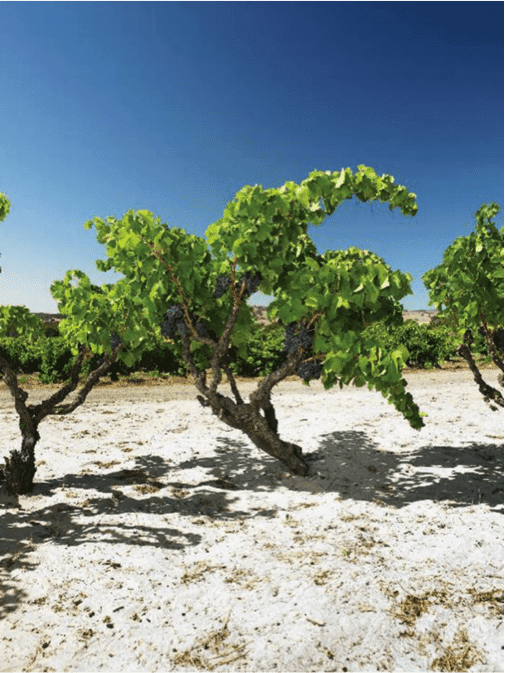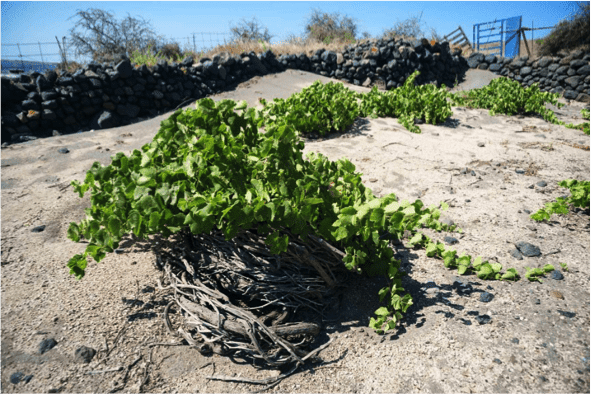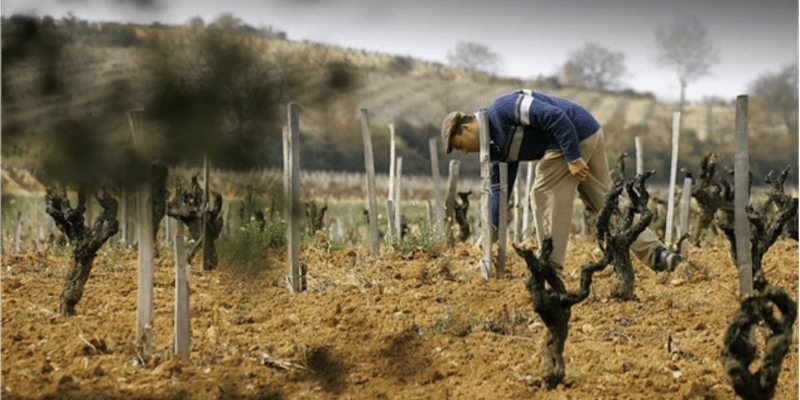by Will Costello, MS
My favorite wine in the world, Château Rayas, needs very little introduction. It carries so much caché for the astute and novice alike. The crazy thing is, Château Rayas is now upwards of $1000 per bottle. (And that’s only if you can get it!) It has been so highly allocated in recent vintages that the likelihood of landing one of these bottles is similar to the likelihood of Elon Musk’s Tesla Roadster returning back to Earth in one piece: next to impossible.
 With one of my favorite wines in the world becoming unattainable, I would have to look for an alternative somewhere else and I wanted to take the time to figure out what made this wine so impressive. Of course, the exceptional winemaking and vineyard management of the Reynaud Family paired with the very old, moldy, and extremely dark cellars are part of the magic. When I realized that sand, the district soil type Château Rayas was planted on, was a huge factor, I decided to look for wineries around the world that replicated this magic.
With one of my favorite wines in the world becoming unattainable, I would have to look for an alternative somewhere else and I wanted to take the time to figure out what made this wine so impressive. Of course, the exceptional winemaking and vineyard management of the Reynaud Family paired with the very old, moldy, and extremely dark cellars are part of the magic. When I realized that sand, the district soil type Château Rayas was planted on, was a huge factor, I decided to look for wineries around the world that replicated this magic.
Sand is not actually considered the “soil type” itself. It is technically considered a soil texture as it can be made from any sort of rock or substrate. Sand can be decomposed granite, limestone, or river stones. Really, anything can be considered sand as long as it has a texture that doesn’t allow much water retention and can be described as “lighter than clay, but heavier than silt.”
One of the greatest things about sand is its ability to create hydric stress within the plant material. Some of the greatest wines of Burgundy showcase their purity because of the hydric stress caused by the lack of rain and free draining soils in the heart of the Côte-d’Or. In regions where rain is a regular occurrence, the free draining sand allows the water to pass away from the root system quickly. This relieves potential rot and fungus issues that can infect the roots. The hydric stress forces grape vines to send extremely deep roots and helps them avoid issues with competing plant life in very dry season.
The characteristic I enjoy most about sand and its commonalities in wines from all over the world is the ability of purity to shine through. Pinot Noir producers would say destemmed wines typically carry a weightier mid palate while those made with whole cluster tend to have the opposite. Wines grown on sand, despite their winemaking technique, tend to show some very common traits: higher acidity in the final wine, more delineated texture in both white and red wines, and the ability to create a lighter bodied wine, even in a region which typically has very warm weather.

Some of the finest sands in the world are found near large bodies of water, but in the heat in some of these regions, Barossa Valley in Australia, Pantelleria off the coast of Sicily, Sulcis in the Sardegna, and small parcels of the Rhône Valley, can be stifling. Yet, wines grown on these specific sands can have a light and elegant character that no other contemporary from the region can claim.
My research of sand and texture helped me seek out wines from around the world that compare in many ways to Château Rayas, but clearly at a huge discount. My favorite wines were from Santa Maria Valley in California, Barossa Valley in Australia, and Campi Flegrei in Campania. I hope to find many more wines by looking for sand around the world and I’m certain that the search will be amazing.
About Will Costello: Will Costello is a Master Sommelier by the American Chapter of the Court of Master Sommeliers. He passed with Distinction the Advanced Certificate of the Wine and Spirits Education Trust. Costello has competed in numerous wine related competitions including the The Court of Master Sommeliers’ TOP/Somm, The Chaine de Rotisseurs’ “Young Somm Competition,” the Ruinart Champagne Challenge, and was named one of Wine & Spirits Magazine’s “Top New Sommeliers 2013.” He is an educator for New Zealand Wines and educates at the Society of Wine Educators National Conference yearly. Costello is often included national publications including The SOMM Journal, Gourmet, Wine & Spirits Magazine, and Eater.







